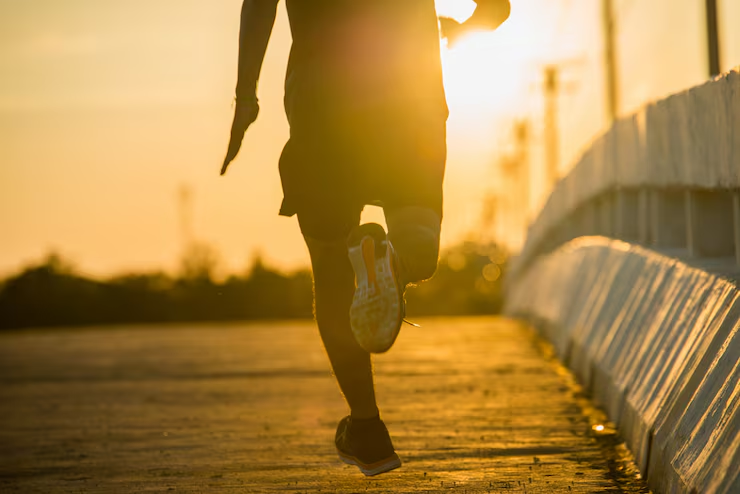Avoiding the Runner’s Trots: How to Time Your Digestion Perfectly
From the science of the gastrocolic reflex to the perfect morning caffeine strategy, here is your complete guide to clearing the pipes before you hit the pavement.
Your running surface can shape your performance, recovery, and injury risk. Here’s how to train smarter on concrete, trails, sand, and more so race day doesn’t catch you off guard.

Let’s get this out of the way what’s under your feet isn’t just a backdrop to your run. It’s the playing field, and it can shape how your body feels tomorrow, next week, and even years from now.
Different surfaces stress your body in different ways, and ignoring that can set you up for injury. Here’s how to play it smart.
Concrete is as hard as it gets. Every step sends impact straight through your legs, and it’s notorious for triggering shin splints and stress fractures. Overdoing it here is like asking for trouble.
How I handle it: I avoid running on concrete more than two days in a row. If I have no choice, I wear my most cushioned shoes and plan an easy recovery day after. I also work in heel raises and shin mobility drills to build up my tibs and calves.
Bonus recovery: easy cycling or a pool workout to flush the legs.
Softer than concrete? Slightly. But road camber the tilt can wreak havoc on hips and knees over time.
Pro tip: Switch road sides during your run so each leg shares the load. Before you head out, add dynamic leg swings to warm up your hips.
I’m also a fan of band walks and IT band foam rolling after a few days on the pavement.
Hard ground equals higher muscle damage and inflammation.
Softer surfaces help you bounce back quicker. Studies confirm it your joints and muscles recover faster when the ground gives a little.
My recovery go-tos: Ice baths when I can bear them, compression socks for travel, and extra protein to rebuild muscle.
Grass feels forgiving, but it hides surprises rocks, holes, uneven patches that can twist ankles fast.
How I stay safe: I lift my feet slightly higher than normal and strengthen my ankles with wobble board work. Single-leg hops and “ankle alphabets” are great pre-run warm-ups.
Trails demand constant balance, and rolled ankles are almost a rite of passage.
My coaching advice: Keep your cadence up and widen your stance when things get uneven.
Tape or brace if you’ve had ankle issues. For warm-up, I like single-leg balance drills with eyes closed and quick lateral moves like cariocas.
Even walking barefoot on sand or a curb before a run wakes up stabilizers.
Soft sand makes your Achilles and calves work overtime, which can lead to tendonitis or strains.
Lesson learned: I now treat sand runs like a strength session just short strides at the end of a regular run, not an entire workout.
Prep with donkey kicks, toe raises, and flutter kicks, and stretch well afterward.
Endless loops in one direction can tighten up the IT band.
Fix: Switch direction when possible, add lateral lunges, and stretch the glute med. Foam rolling the outer quad before and after helps too.
Gentle on joints, yes but the monotony can magnify small form flaws.
Solution: Alternate with outdoor runs and keep the incline between 0–2%. Every mile or so, I do a quick posture check to make sure my form hasn’t slipped.
Afterward, I stretch hips and hamstrings to offset the extra flexion.
No matter the surface, warm up properly.
For uneven or soft ground, add ankle rolls, walking lunges, and a few strides on the surface you’re running. A quick one-foot balance drill can fire up your stabilizers and prevent mishaps.
If your race is on trails, train on trails. If it’s on the road, log most of your miles there.
The point? Your muscles, tendons, and joints adapt to the exact loads you give them. Don’t let race day be the first time you face rocks, mud, or steep descents.
Each surface has a lesson to teach. Runners who stick to one type eventually plateau or get injured, while those who mix terrain grow stronger and more adaptable.
These days, I rotate surfaces often grass for recovery, trails for strength, sand for calf power. I treat it as training for the mind as much as the body.
Next time you run, add a surface you usually avoid. Adapt on the fly. Learn what it does to your stride and mindset.
Your body will thank you. Your mind will sharpen. And your stride will be ready for anything.
Start your running journey today!
No spam. Cancel anytime.